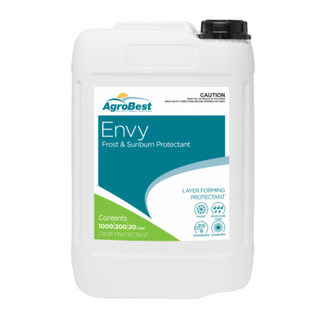When we talk about heat stress in trees and plants, we're referring to the condition where high temperatures, often combined with intense sunlight, low humidity or insufficient water, begin to impair plant function. In the Australian summer, especially in regions like Western Australia, plants can suffer from a range of symptoms of heat stress including:
-
Wilting or drooping foliage
-
Scorched or bleached leaf margins
-
Premature leaf drop
-
Reduced growth, or halting of growth
-
Branch die-back, especially on outer canopy
-
Increased vulnerability to pests and diseases
Why does this happen? Essentially, high heat increases evaporation from leaves and soil, placing demand on the root system to supply water. If the roots can’t keep up, or the soil becomes too hot or dry, the plant can’t maintain its metabolic processes, leading to stress, decline or even death.
In landscaping and horticultural settings, proactively managing for heat stress is a smart investment. Fortunately, with the right planning and product choices, you can significantly reduce the risk.
Key Strategies to Prevent Heat Stress
Here’s a structured approach to keeping your trees and plants healthy through the summer months:
1. Prepare Soil & Root Zone
A well-prepared soil/planting environment helps plants resist heat stress more effectively. Consider these steps:

-
Improve soil structure so that it holds moisture more evenly and allows roots to access it.
-
Use soil conditioners to boost water- and nutrient-holding capacity. For example, the product TerraCottem Arbor Soil Conditioner is designed specifically for trees and shrubs; it helps with water retention and root development, improving survival under drought and heat conditions.
-
To further strengthen plant resilience, consider Seaweed Secrets Extract, which supports root health and plant recovery during stressful periods.
2. Mulch and Shade the Root Zone
-
Apply a layer (e.g. 75-100 mm) of organic mulch (e.g. wood chips, bark) around trees and plant beds. This helps keep the soil cooler, slows evaporation and moderates root-zone temperature.
-
Keep mulch a few centimetres away from the trunk to avoid bark rot.
-
For containers and shallow‐rooted plants, consider shade cloth or summer covers for a few hours per day to reduce peak sun exposure.
3. Water Intelligently
Watering is the frontline defence against heat stress. Key tips:
-
Early morning watering is ideal, so plants are hydrated before the heat peaks.
-
Deep watering (so the root zone is moistened) is better than frequent shallow watering.
-
Avoid overhead watering during the height of the day, water loss via evaporation is greater.
-
Use soil wetting agents to help water penetrate and spread in dry or hydrophobic soils.
-
Monitor the root zone: when surface soil dries quickly and roots are shallow, plants are at greater risk.
4. Choose the Right Planting Timing and Species
-
In Australian conditions, planting just before or early in spring gives plants a head start before heat peaks in December.
-
For summer plantings, ensure extra mitigation (shade, mulch, watering) is in place.
-
Choose tree and plant species that are naturally suited to your climate zone (i.e., heat-tolerant and/or drought‐resistant).
-
For new trees, using a product like TerraCottem Arbor supports better root development and improves the plant’s resilience to heat and drought.
5. Monitor and Respond Quickly
-
Watch for wilting or leaf scorch.
-
Increase shade, watering or mulch at the first sign of stress.
-
Products like Treemasta can support young trees during establishment and help reduce stress through improved soil moisture and nutrient availability.

Product Focus: How StrataGreen Supports Heat-Stress Prevention
Here are some specific product options available at StrataGreen that align well with heat-stress prevention:
|
Product |
Purpose |
How it Helps During Heat Stress |
|
Soil amendment |
Boosts water retention and root development, improving drought and heat resilience. |
|
|
Improved water distribution |
Restores hydration in dry, water-repellent soils. |
|
|
Liquid seaweed extract |
Supports plant recovery, root strength, and stress tolerance. |
|
|
Tree-establishment growing media |
Helps young trees retain moisture and nutrients during hot periods. |
|
|
Protective polymer spray |
Provides an extra layer of shielding against sunburn, heat stress, and moisture loss. |
|
|
Mulch & Soil Improvement Products |
Organic mulches and conditioners |
Insulate soil and slow evaporation. |
Using these targeted products means you’re investing in the root-zone resilience of your trees and plants, which is exactly where heat stress begins to manifest.
Practical Summer Heat-Stress Prevention Plan
Here’s a suggested timeline and checklist for the Australian summer season to keep your trees and plants safe:
Pre-December (Spring)
-
Audit your landscape: identify trees/plants in exposed, heat‐prone sites.
-
Apply soil conditioner if planting new trees.
-
Lay fresh mulch around trees and large shrubs.
-
Set up watering system: ensure irrigation can deliver deep watering early morning.
December to February (Peak Summer)
-
Water deeply twice a week (or more under extreme heat) in the early morning.
-
Monitor soil moisture 5-10 cm below surface. If dry at that depth, increase watering.
-
Inspect plants weekly for signs of stress (wilting, leaf-scorch).
-
If soils are repelling water (often happens after long dry spells), apply a soil wetting agent.
-
Refresh mulch as needed (check thickness, replenish if <50 mm).
-
Apply Envy Frost & Sunburn Protectant on young or vulnerable foliage to reduce sunburn risk.

Post-Summer (Late Summer / Early Autumn)
-
Reduce watering frequency as temperatures ease but monitor root zone.
-
Remove invasive weeds which compete for water in the root zone.
-
Consider a top-dress application of soil conditioner or mulch refresh to prepare for next season.
-
Record any heat-stress episodes and note any underperforming sites for redesign or plant substitution.
Why Root Zone Preparation Matters More Than Just Leaf Spraying
It’s tempting to think that heat stress can be “fixed” by misting leaves, installing shade cloth, or only watering more frequently. While those are helpful, the underlying issue often lies at the root zone:
-
When soils are poor (e.g. compacted, low in organic matter, hydrophobic after drought) the roots can’t access water or oxygen properly.
-
High surface temperatures can damage root systems and reduce their capacity to uptake water and nutrients.
-
A well-amended root zone (with improved water- & nutrient-holding and structure) means the tree has a buffer against heat spikes and water deficits.
Using a solution like TerraCottem Arbor ensures that when I plant a tree, I’m not just focusing on visible canopy but embedding resilience into the root zone from day one. That translates into fewer replacements, lower watering bills and healthier trees through long hot summers.
Summary & Take-Home Messages
Overall, preventing heat stress in trees and plants is about planning, root‐zone preparation, intelligent watering and monitoring. The Australian summer is a high-risk period, but with the right approach you can keep your landscape performing strongly. Key points to keep top of mind:
-
Start from the root zone: soil conditioners and amendments matter.
-
Apply deep, early-morning watering rather than frequent shallow waterings.
-
Use mulch and shade to moderate heat and evaporation.
-
Monitor regularly for early stress signals and respond quickly.
By being proactive, you’ll give your trees and plants the best chance to thrive through December, January and February, not just survive them.
If you’re looking for practical solutions to help your plants cope with summer conditions, explore the available products or get in touch for friendly advice.





